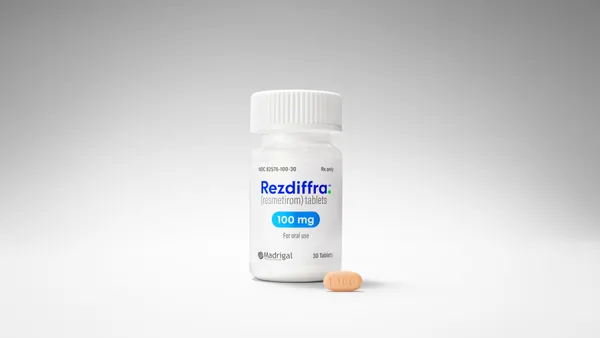20 September 2008 VIEW on Marketing COMMERCIAL EFFECTIVENESS Spotting continuity errors in films — such as when a character’s hairstyle changes inexplicably in the middle of a scene — can be rather amusing, and there are now entire websites devoted to sharing these little anomalies. But continuity errors in the development and marketing of pharmaceutical products are anything but amusing. When the commercial team has a different vision of the patient than the development team, disconnects occur, market access hurdles arise, and strategies can’t be translated into workable tactics. Just as movie makers have script supervisors to help them avoid continuity errors, pharmaceutical manufacturers now have patientcentric databases, or anonymized, patientlevel data (APLD), to ensure that the same view of the patient infuses decisions made from early in the development process all the way through the product’s late life cycle. While early applications of patientcentric data focused on postlaunch applications, patient insights should actually be part of the entire brand journey. The good news is that taking the patient on the brand journey is not labor intensive or even extra work; it simply involves looking at things in a different way. The brand journey milestones discussed here are those that are most dependent upon a clear understanding of the patient as can be derived from APLD, often in conjunction with other data sources. Understanding Brand Potential Since everything downstream naturally flows from assumptions made when initiating the core clinical and health economic development program, companies must take great pains to gain a complete and aligned understanding of the actual size, profile, and flow of a new product’s patient base. An error in judgment here can have negative consequences later on. For most pharmaceutical products, the available market is the “dynamic market” — those prescriptions for nave patients who will seek treatment for the first time or whose needs are underserved by existing treatments. IMS research has shown that for 10 common chronic diseases, the dynamic market represents approximately 10% of the total prescription market on an annual basis. The remainder of the market is “static,” made up of patients whose therapy is continued via repeat or refill prescriptions. While companies shouldn’t completely ignore the static market, they need to realize that their potential to win significant business within it is extremely limited. Of the pharmaceutical products that fail, perhaps many would have never been brought to market if this were understood. Aligning Around the Brand Vision Patient flow models based on integrated medical claims databases pin point where patients enter the healthcare system and illustrate how their treatment progresses. In revealing patterns in realworld clinical practices, such models quantify the number of patients in each part of the pathway and the source of business for each existing therapy. By applying advanced statistics to these findings, analysts can forecast a patient’s lifetime value with a great deal of precision, taking into consideration the likely impact of managed care policies, switching, disease severity, concomitant therapies, and nonadherence. With this information on the true size of the market and the patient profile that is matched to the product’s attributes, companies can proceed to design Phase III B/IV clinical programs, health economics and outcomes research, as well as the product’s regulatory/labeling strategy. In addition, this insight will help inform the educational platform and promotional strategy by focusing on the right patient segments. Developing the Clinical Strategy The Phase III B/IV clinical development plan should take into account the expected portion of the patient population that will be new to therapy, switching therapies and adding on a therapy. If, for instance, the drug is expected to be add on therapy for a portion of the population, APLD can reveal the concomitant medications that are most prevalent in that group. Clinical trials should thus anticipate side effects in these cases. Likewise, if much of the business is expected to come from patients who IMS The Road to Success PatientCentric Approaches Across the Brand Journey Robert Harold Senior Principal, IMS Placing the Patient at the Center of the Drug Development and Commercialization Process Focusing on patientlevel insights can help align the organization and connect development and commercialization activities. PATIENT DEVELOPMENT COMMERCIALIZATION Clinical R&D Sales Training Sales Commercial Analytics Marketing Managed Markets Health Economics Outcomes Research Regulatory COMMERCIAL EFFECTIVENESS switch therapies, trials must also provide compelling evidence for physicians that switching a patient from an existing therapy would be beneficial. Finally, for new patients, the product must demonstrate robust evidence that it is beneficial versus other currently available therapies. Preparing the HEOR Strategy Similarly, the health economics and outcomes research (HEOR) plan can leverage patientcentric data to both determine the type of studies that will be necessary and to form the basis of the research itself. The actual evidence used to prove the value of a medicine is drawn from longitudinal prescription records, integrated claims data and patient medical records. All of these aspects of APLD can be used to quantify the medical need, express patient outcomes in quantifiable terms and calculate the financial impact at a given price. Launch Planning and Promotion Because the dynamic market is the main driver of brand growth during the first six months of a launch, a brand’s launch trajectory is established within its first six months on the market and after that point, remains fairly fixed. APLD’s insights on the dynamic market help the commercialization teams of marketing, managed markets and sales management: . Allocate promotional resources by defining physician segments that initiate therapy versus those that “inherit and maintain” . Identify the physicians treating patients that match the target patient profile . Guide a sampling strategy, taking into account each physician’s role in the dynamic market . Develop messaging that addresses the unique needs of patients and prescribers . Identify payer needs and develop messages/programs to facilitate marketaccess Allocating the Field Force Segmenting physicians by their prescribing levels for the dynamic market can suggest the ideal call frequency for each physician (and hence the required size of the sales force) with great precision. In one analysis on an established brand in a chronic care market, IMS learned that prescribing volume peaked in segments with a low volume of prescriptions for the dynamic market following just two or three sales calls. In contrast, physicians who were high prescribers to the dynamic market continued to respond to pro motion even after 30 calls. Managing Performance Considering that the development and commercialization strategy is based on transparent assumptions about market size, dynamic segments and patient flow, it is now possible to evaluate the company’s performance against those assumptions. Did the company achieve its goals for the product? Did its source of business come from the right patient segments and the right proportion of new, switch or addon patients? In providing a realworld perspective of patients’ attributes and healthcare treatment over time, APLD can be used post launch to identify performance gaps, shed light on competitive threats and reveal growth opportunities. Companies have been using it to: . Reveal uptake in those patient segments who would benefit most from a drug . Highlight treatment practices that suggest the need for further clinicalinvestment . Track and improve adherence programs Evaluating Promotion Because of the expanded availability of patientcentric information, promotional impact can be measured along three important dimensions: new therapy starts, switches or continuations. Best practice applications in using APLD to evaluate promotion include: . Measuring the contribution that a promotion or channel makes to each point in the patient life cycle, enabling evidence based optimization . Evaluating the effectiveness of the messaging at guiding new start, switch or addon behaviors . Measuring the effectiveness of highly directed, spot in time promotions such as voucher programs Determining and Aligning Compensation Today, few companies build details of the dynamic market into their sales objectives or measures of individual performance. However, imagine the power of having the entire commercial organization (marketing, sales and managed markets) rewarded, at least in part, on their achievement of the same goals that were originally set a decade or so earlier at the beginning of the brand journey! Compensation plans can incorporate patient centered metrics both to align team members with the strategy and to reward performance against defined patient segment targets. Conclusion Using longitudinal prescription records, integrated claims data and patient medical records throughout the brand journey can have profound consequences. First and foremost, it helps ensure that a product meets the needs of the market and that the company proceeds with realistic expectations for the brand. With a complete and cohesive view of the patient, the entire organization can be aligned along the same market construct, the same goals and the same strategy. IMS plays a central role in advancing global healthcare — revealing the insights within the most comprehensive market intelligence available. For information, visit imshealth.com/lifelink or email [email protected]. Note: Content in this article was the subject of a 60minute webinar held Sept. 9, 2008. The Market Pyramid The prescription segments shown here are in proportion to what can be expected in a chronic care market, where generally, only about 10% of the total market is in play. Drugs Switched In “Static” Submarkets: Repeat Prescription Market Drug Added On “Dynamic” Submarkets” New Prescription Market Supplementary Market Drug Switched Out To access the FREE ondemand replay of the Webinar The Road to Success: Patient Centric Approaches Across the Brand Journey, go to pharmavoice.com/patientcentric.
An article from


The Road to Success Patient-Centric Approaches Across the Brand Journey
Filed Under:
Commercialization









